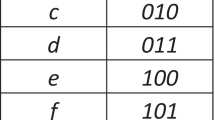Abstract
In this paper we shall be concerned with the lexicographic implications of the semantic model aiming at automatic synthesis of natural (Russian) texts. The general design of the model and its main components (a deep vocabulary and syntax and a system of semantic equations generating sets of synonymous Russian sentences for every input meaning) are outlined elsewhere.1 We assume at least a superficial knowledge of the relevant details on the part of the reader and in the present publication limit ourselves to a rather sketchy outline of a special type of dictionary underlying the ‘meaning-text’ model in question.
Access this chapter
Tax calculation will be finalised at checkout
Purchases are for personal use only
Preview
Unable to display preview. Download preview PDF.
Similar content being viewed by others
References
A. K. Žolkovsky and I. A. Mel’čuk: ‘O semanticeskom sinteze’, in: Problemy kibernetiki, Vol. 19 (1967) pp. 177–238.
Knowledge of grammar and, in particular, morphology is naturally presumed, and is thus beyond the scope of the dictionary proper.
Meaning definitions given here and below do not claim to be complete (i.e. they are not necessarily genuine definitions): they carry only those components of meaning that are required for the purposes of illustration.
These primitive units are explained by means of pictures, by a non-formal description of their usage (through examples), etc.
The component ‘He3axoxxo’ is indispensable because an attempt at killing in war or while on duty is not called `noxymexxe’.
The word “obligatory” is understood in the broad sense and does not extend to a number of purely grammatical constructions (not registered in the dictionary) in which even obligatory places may be left unfilled, e.g. indefinite personal or modal constructions, etc.
Two strokes denote the so-called mergers (portmanteau realizations of LF): the value of a certain lexical function covers both the meaning of Co and of LF(Co), therefore it cannot be combined with Co in a syntagm; Cf. Magn (rain) = heavy // shower, where shower = heavy rain.
Author information
Authors and Affiliations
Editor information
Rights and permissions
Copyright information
© 1969 D. Reidel, Dordrecht-Holland
About this chapter
Cite this chapter
Apresyan, Y.D., Mel’čuk, I.A., Žolkovsky, A.K. (1969). Semantics and Lexicography: Towards a New Type of Unilingual Dictionary. In: Kiefer, F. (eds) Studies in Syntax and Semantics. Foundations of Language, vol 10. Springer, Dordrecht. https://doi.org/10.1007/978-94-010-1707-7_1
Download citation
DOI: https://doi.org/10.1007/978-94-010-1707-7_1
Publisher Name: Springer, Dordrecht
Print ISBN: 978-90-277-0597-6
Online ISBN: 978-94-010-1707-7
eBook Packages: Springer Book Archive




